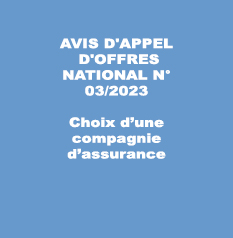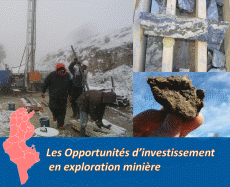| Programme annuel & rapport de suivi technique |
-

Rapport d'activités 2023
-

Programmes Techniques 2024
|
| Géocatalogue |

|
| Appels d'Offres |
-

ACQUISITION DES TICKETS RESTAURANT POUR LE PERSONNEL DE L’ONM
-

CHOIX D’UNE COMPAGNIE D’ASSURANCE
-

ACQUISITION ET MISE EN ŒUVRE D’UN PROGICIEL DE GESTION INTEGRE
|
|
Investir en Tunisie |


|
|
|
|
|
::
Documentation and Editions
>>
Research library
|
| |
|
[
Search by author
]
[
Search keyword
]
[
Search by index
]
[
Search by category
]
|
title of the reference :
|
Subsurface Neogene Clay diapirs in the Northern Tunisia : basin structuration and petroleum implications.
|
|
Publication Date:
|
1998
|
|
Author :
|
Bedir Mourad, Bobier Claude, El Manaa Samir
|
|
Catalogue type :
|
Livre
|
|
Catalogue reference :
|
Subsurface Neogene Clay diapirs in the Northern Tunisia : basin structuration and petroleum implications. Subsurface and surface geologic and geophysic studies conducted on the Neogene series in the northern and oriental regions of Tunisia permitted to highlight their basin structuration and evolution. Neogene sequence deposits are distributed across graben, half graben, platforms, folds and syncline basins. Miocene, Pliocene and Quaternary series are composed by several thounsands meters of mainly thick clay and sandstone packages. Clay and mud diapirs were recognised in small scale in the Miocene outcrops of the North Atlassic and Sahel regions and in the Gulf of Hammamet where they are well developped in subsurface and visible in seismic scale. Clay kinesis is induced by the lithostatic pression of Plio-Quaternary thick deposits and by transtensive and transpressive movements of North-South Grombalia, Enfidha, El Jem and East-West Hammamet, Maamoura, Kuriat and Boumerdès-Mahdia flower fault corridors. The occurrence of diapirs is fossilized on their flanks by synsedimentary Miocene, Pliocene and Quaternary high angle subsiding graben and synclinal basins with dowlap prograding sequences onlapped by aggrading and retrograding system tracts and pinch outs and structural and stratigraphic unconformities. The clay diapirism is accompagned by right and left lateral formation of basins and subsidence migration along strike slip fault corridors. The top of diapir structures are marked by toplap erosional surfaces of Upper Miocene, pliocene or quaternary sequences. Basin model is presented to visualize the structuration, the mechanismes and the distribution of clay diapirs around basin and tectonic structures. These Neogene diapirs are recognized and described for the first time in Tunisia. The existence of mud diapirism in the Miocene oil field area of the Gulf of Hammamet permits to precise a new geodynamic model comprising important petroleum implications in terms of structuration, system tracts, migration fluids, traps and seals.
ETAP MEMOIR N°12
Néogène ; lithostratigraphie ; profil sismique ; Tunisie ; Tunisie Nord Orientale ; Tunisie Orientale-Sahel:Golfe de Hammemet ; Zeramdine ; Bon Merdès ; Kuriat Bobier Claude El Manaa Samir Bedir Mourad Géologie structurale
|
|
Indexation decimale :
|
Géologie structurale
|
|
Keywords :
|
Néogène ; lithostratigraphie ; profil sismique ; Tunisie ; Tunisie Nord Orientale ; Tunisie Orientale-Sahel:Golfe de Hammemet ; Zeramdine ; Bon Merdès ; Kuriat
|
|
Summary :
|
Subsurface and surface geologic and geophysic studies conducted on the Neogene series in the northern and oriental regions of Tunisia permitted to highlight their basin structuration and evolution. Neogene sequence deposits are distributed across graben, half graben, platforms, folds and syncline basins. Miocene, Pliocene and Quaternary series are composed by several thounsands meters of mainly thick clay and sandstone packages. Clay and mud diapirs were recognised in small scale in the Miocene outcrops of the North Atlassic and Sahel regions and in the Gulf of Hammamet where they are well developped in subsurface and visible in seismic scale. Clay kinesis is induced by the lithostatic pression of Plio-Quaternary thick deposits and by transtensive and transpressive movements of North-South Grombalia, Enfidha, El Jem and East-West Hammamet, Maamoura, Kuriat and Boumerdès-Mahdia flower fault corridors. The occurrence of diapirs is fossilized on their flanks by synsedimentary Miocene, Pliocene and Quaternary high angle subsiding graben and synclinal basins with dowlap prograding sequences onlapped by aggrading and retrograding system tracts and pinch outs and structural and stratigraphic unconformities. The clay diapirism is accompagned by right and left lateral formation of basins and subsidence migration along strike slip fault corridors. The top of diapir structures are marked by toplap erosional surfaces of Upper Miocene, pliocene or quaternary sequences. Basin model is presented to visualize the structuration, the mechanismes and the distribution of clay diapirs around basin and tectonic structures. These Neogene diapirs are recognized and described for the first time in Tunisia. The existence of mud diapirism in the Miocene oil field area of the Gulf of Hammamet permits to precise a new geodynamic model comprising important petroleum implications in terms of structuration, system tracts, migration fluids, traps and seals.
|
|
Exemplaries :
|
-
|
|
|
|
|
|
|
|



